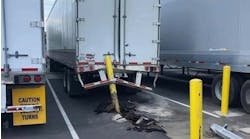The National Motor Freight Traffic Association’s Digital LTL Council has released the eBOL 2.1. The latest update to the established electronic bill of lading standard was developed by the council in response to industry feedback and is intended to further drive its initiative to digitize the entire LTL shipment life cycle over the next several years.
“There are many benefits to having a digitized and standardized electronic bill of lading,” said Paul Dugent, executive director of the Digital LTL Council at NMFTA. “The information submitted to the carrier is more accurate due to it being transmitted in an electronic, standardized, digitized format for the shipper. Typically, a carrier receiving a paper bill of lading would manually enter it into their system, which may lead to errors. These errors can appear as misroutes and create additional challenges for the entire supply chain cycle, such as the customer receiving their freight late.”
See also: Study: Digitizing complicated LTL shipments benefits fleets’ bottom lines
The changes in eBOL 2.1 are fully compatible with the existing versions already downloaded and used by most of the industry. Critical issues brought to the council's attention by users have been addressed, such as:
- New HTTP methods that add the ability to update or delete eBOL data using the relevant PRO number as the key identifier.
- Expansion of the existing generic limited access locations by adding more specific limited access types.
- Addition of nine-digit postal codes as a valid format.
- Addition of a new “scac” attribute that can be used to return a four-digit Standard Carrier Alpha Code.
- Addition of the optional attribute “Weight Unit” to several objects that were missing them and more.
While these are only a small sample of the changes, the Digital LTL Council is committed to working with the industry to create the most user-friendly, thorough, comprehensive standards that will help every supply chain sector operate more effectively, efficiently, and succinctly.



